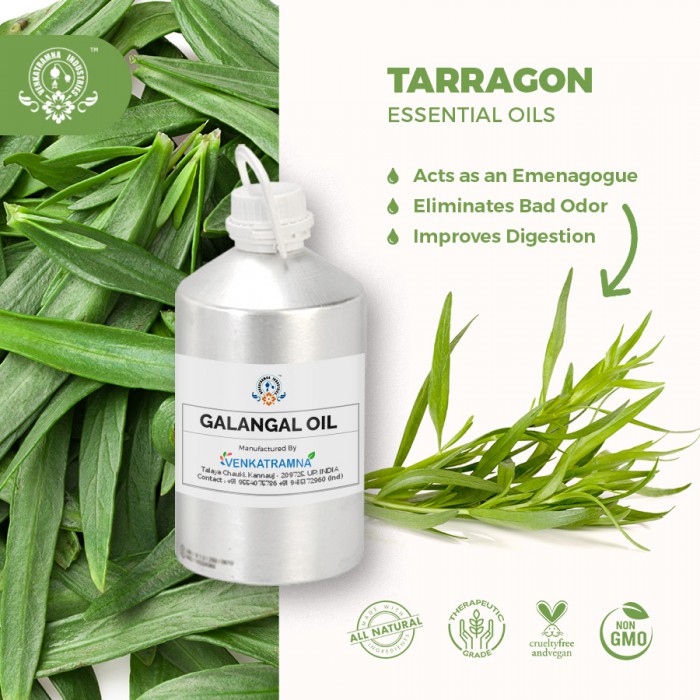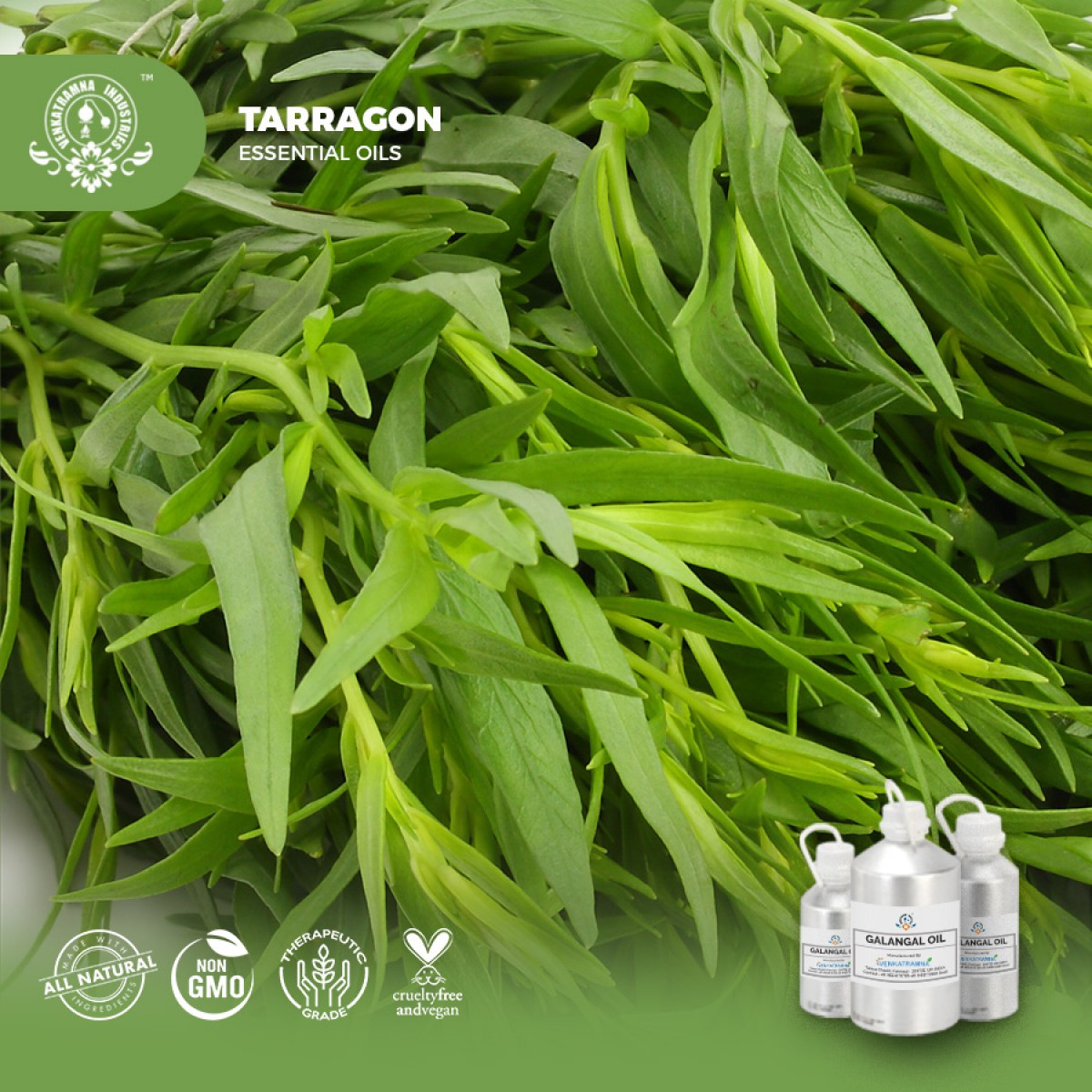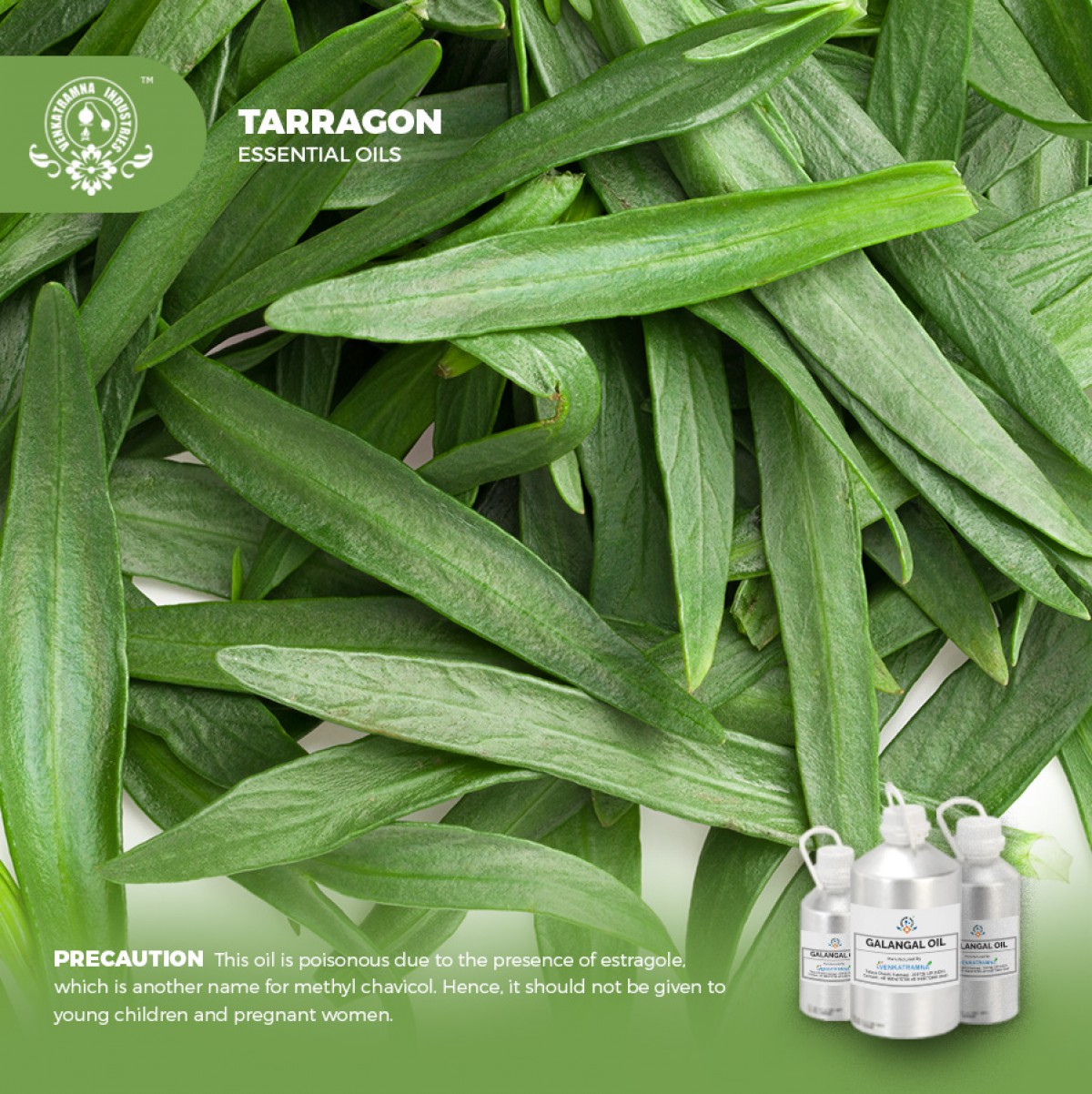Botanical Name: Artemisia dracunculus Common name: Wild terragon Plan Read More
|
Botanical Name: |
Artemisia dracunculus |
|
Common name: |
Wild terragon |
|
Plant family: |
Asteraceae |
|
Genus: |
Artemisia |
|
Appearance/Color: |
A thin, clear, colorless to pale yellow liquid. |
|
Odor: |
A middle note with a medium aroma, Tarragon Essential Oil has a
richly sweet, green, anise-like green scent with spicy notes. |
|
Blends With: |
Lavender, Pine and Birch Sweet. |
|
Origin |
Hungary |
|
Source |
Leaves |
|
Method of
Extraction |
Steam Distillation |
Artemisia, one of the larger genera in the family Asteraceae and the largest genus in the tribe Anthemideae, comprises from 200 to more than 500 taxa at the specific or subspecific level. Many Artemisia species have a high economic value in several fields, as food plants and as antihelminthic and antimalaria in medicine. Artemisia dracunculus, commonly called wild tarragon, is a polymorphic species that is native to temperate Europe and Asia. It is also found in western North America, though many of these populations may have resulted from introduction and naturalization. It produces viable seed and will often self-seed. Its leaves produce variable flavor and aroma, sometimes lacking both flavor and aroma. It has a long history of medicinal uses, but the species is not often used for culinary purposes. It is a rhizomatous perennial or sub-shrub that typically grows to 24” (less frequently to 36”) tall on generally erect stems clad with narrow, linear to lance-shaped, light to medium green leaves (to 3-4” long). Greenish white flowers in narrow elongated panicles bloom in summer.
DISCLAIMER
The complete range of conditions
or methods of use are beyond our control therefore we do not assume any
responsibility and expressly disclaim any liability for any use of this
product. Information contained herein is believed to be true and accurate however,
all statements or suggestions are made without warranty, expressed or implied,
regarding accuracy of the information, the hazards connected with the use of
the material or the results to be obtained from the use thereof. Compliance
with all applicable federal, state, and local laws and local regulations
remains the responsibility of the user.
The FDA has not evaluated the
statements on this website. No claims are made by Venkatramna Industries as to
the medicinal value of any products from vriaroma.com or by us. The information
presented here is for educating our customers about the traditional uses of
essential oils and is not intended to diagnose, treat, cure, or prevent any
disease. You are responsible for understanding the safe application of these products.
If you have any questions, please call or email us for further information.
As per NAHA guidelines, New Directions Aromatics
(NDA) does not recommend the ingestion of essential oils. It is imperative to
consult a medical practitioner before using Essential Oils for therapeutic
purposes. Pregnant and nursing women and those taking prescription drugs are
especially advised not to use this product without the medical advice of a
physician. The oil should always be stored in an area that is inaccessible to
children, especially those under the age of 7.
The plant is harvested from the
wild for local use as a medicine and fuel. The plant is sold in local markets
for medicinal use. Artemisia herba-alba is a popular herbal treatment in N.
Africa, where it is a remedy for all kinds of ailments. The plant is considered
to be carminative, cholagogue, depurative, diuretic, emmenagogue, sedative,
stomachic, tonic and vermifug. It is used in the treatment of conditions such
as diabetes, coughs and colds, lung problems, diarrhoea, vomiting, flatulence,
fever, measles, jaundice, poisoning, cardiac arrhythmia, and muscle weakness It
is also used for treating parasitic infections such as roundworms, pinworms, tapeworms,
hookworms, and flukes.
COMMON USAGE
·
Treats arthritis
·
Increases appetite
·
Boosts blood circulation
·
Improves digestion
·
Eliminates bad odor
·
Acts as an emmenagogue
·
Stimulates nervous system
·
Kills intestinal worms
Ingredients:
|
S.No |
Key Constituents |
Strength (%) |
|
1 |
Estragole |
73.3-87.3 |
|
2 |
(Z)-b-ocimene tr |
9.5 |
|
3 |
(E)-b-ocimene tr |
9.1 |
|
4 |
(P)-limonene |
0-3.5 |
|
5 |
a-pinene |
0.5-2.0 |
|
6 |
Methyl-eugenol |
0.1-1.5 |
Safety Summary
·
Hazards Potentially carcinogenic, based
on estragole and methyl-eugenol content; inhibits blood clotting.
·
Contraindications Should not be taken in
oral doses.
Organ Specific Effects
·
Adverse skin reaction Undiluted tarragon
oil was irritating to rabbits, mice and pigs; tested at 4% on 25 volunteers it
was neither irritating nor sensitizing. It is non-phototoxic.
·
Cardiovascular effects Tarragon oil
inhibits platelet aggregation, an essential step in the blood clotting cascade.
Systemic Effects
·
Acute toxicity: Tarragon oil acute oral
LD50 in rats 1.9 mL/kg; acutedermalLD50 in rabbits>5 g/kg.
·
Carcinogenic/anticarcinogenic potential Estragole
and methyleugenol are rodent carcinogens when exposure is sufficiently high;
(þ)-limonene displays anticarcinogenic activity. Tarragon oil was mutagenic in
the Bacillus subtilis rec-assay, but not in the Salmonella/microsome reversion
assay; DNA-damaging activity was found to reside in the estragole fraction of
the oil. An Italian tarragon oil, with 60.5% estragole and 0.5% methyleugenol,
was genotoxic in Saccaromyces cerevisiae strain D7.
·
Antioxidant/pro-oxidant activity Tarragon
oil generally has weak antioxidant and radical scavenging activity.
·
Info summery of Ecological Information Balance
of data on substance, not determined.
·
Eco toxicological properties of specific
substances
Toxicity Acute fish toxicity: LC50 / 96 HOUR – No data
available
Toxicity to aquatic plants – No data available
Toxicity to microorganisms – No data available
Toxicity threshold – No data available
·
Persistence and degradability Biodegradation is
expected
·
Bio-accumulative potential Bioaccumulation is
unlikely
·
Mobility in soil Unknown
·
Other adverse effect Avoid exposure to marine
environments and waterways





 MSDS-Terragon.pdf
MSDS-Terragon.pdf




